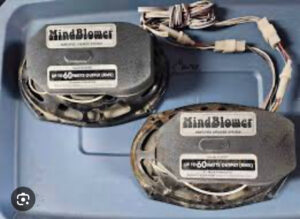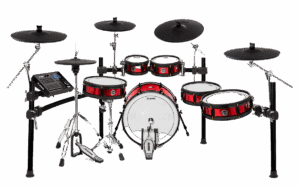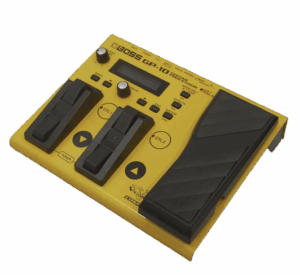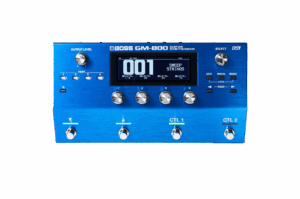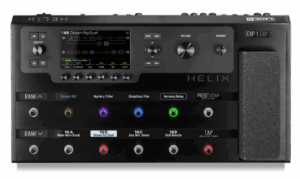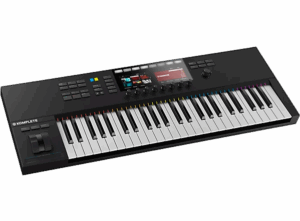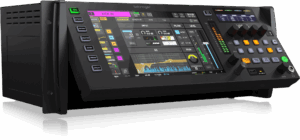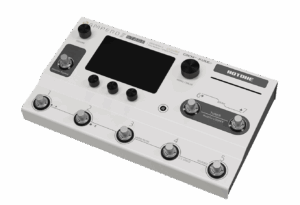Ampero Stage II
3 min read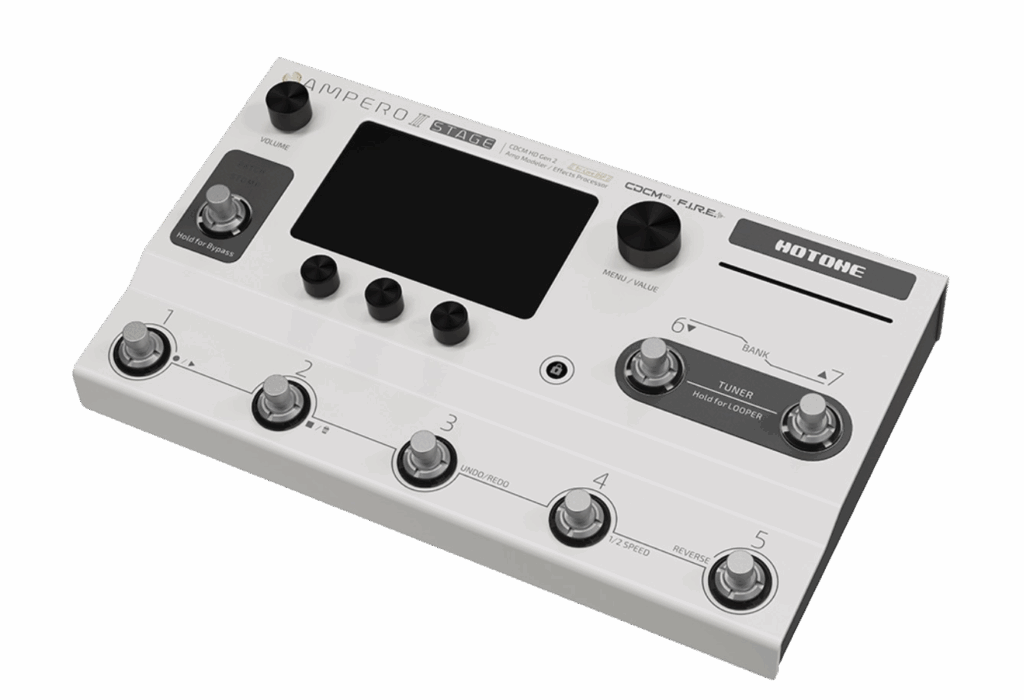
The Hotone Ampero II Stage is a versatile multi-effects pedal and amp modeler designed for live performance, offering a robust feature set at a competitive price point. Below is a detailed review based on available information and user feedback, highlighting its strengths and weaknesses.
Hotone Ampero II Stage Review
- Build and Design
- Pros: Compact yet sturdy metal casing (301 x 180 x 58 mm, 1.9 kg) withstands stage use. Eight LED-skirted footswitches are well-spaced, minimizing mis-hits. A 5-inch high-resolution touchscreen offers smartphone-like responsiveness, and the modern UI with LED indicators enhances usability.
- Cons: Some users report noise issues with certain guitars or gain settings, though this may vary by unit. No dedicated tuner or looper button, requiring simultaneous footswitch presses, which can be cumbersome.
- Sound Quality
- Pros: Powered by a triple-core DSP and ESS Sabre AD/DA converters, it delivers expressive tones with a 127dB dynamic range. Over 460 effects, 90+ amp models, 68 cab models, and 100+ pedal models cater to diverse genres. The Tone Catch feature (since September 2024) allows capturing analog rigs or VSTs, enhancing tonal versatility, especially for bassists. Clean and ambient tones shine, and microphone modeling adds depth to cab sims.
- Cons: High-gain and crunch tones can sound harsh or brittle compared to premium modelers like Fractal or Quad Cortex. Some amp models lack the depth and authenticity of high-end competitors, and stock bass amps may underwhelm without captures. Slight latency is noticeable but not deal-breaking.
- Features and Functionality
- Pros: Supports up to 12 simultaneous effects with dual signal chains (series/parallel), offering flexibility for guitarists and vocalists (mic input with 48V phantom power). The Scene feature (up to five per patch) enables seamless transitions within songs. Built-in looper (60-second stereo, half-speed/reverse options) and drum machine with 100 patterns enhance practice. Bluetooth connectivity and iOS/Android apps allow wireless editing, while 8×8 USB audio (44.1kHz–192kHz) supports recording/streaming. Extensive I/O, including stereo FX loop, XLR outputs, and dual expression pedal jacks, suits complex stage setups.
- Cons: Tap Tempo implementation has syncing issues across scenes, frustrating for live use. Limited to five scenes (compared to competitors like Helix). Vocal effects are functional but limited compared to dedicated units.
- Ease of Use
- Pros: Intuitive touchscreen and redesigned UI streamline patch creation and live adjustments. Patch and Stomp modes, with customizable footswitches, cater to varied workflows. The Hotone community platform simplifies patch sharing. Editor apps for Win/Mac/iOS/Android are reliable, and Bluetooth MIDI enhances control options.
- Cons: Some users find the lack of dedicated knobs (relying heavily on touchscreen) less ideal for quick tweaks. Complex setups may require a learning curve, especially for scene management.
- Value for Money
- Pros: Priced around $559–$700 (depending on sales), it’s a strong value compared to pricier options like Quad Cortex or Fractal FM9. Offers features like Bluetooth, mic input, and Tone Catch that competitors in this price range (e.g., HX Stomp, ToneX) lack. Ideal for gigging musicians seeking a compact, all-in-one solution.
- Cons: Sound quality doesn’t match top-tier modelers, which may justify the cost for professionals. Some users report reliability concerns, with one noting the unit failed after a few months.
- Live Performance
- Pros: Eight footswitches and a lock button prevent accidental changes during gigs. Bright LEDs ensure visibility in daylight, and snappy patch/scene changes enhance reliability. Bluetooth and dual outputs (XLR/jack) support flexible stage routing.
- Cons: Noise issues and Tap Tempo bugs can hinder live performance. Fewer footswitches than high-end units like FM9 may limit complex setups.
Summary
The Hotone Ampero II Stage is a compelling choice for gigging musicians on a budget, offering a feature-packed, stage-friendly design with solid build quality and versatile connectivity. Its touchscreen UI, Bluetooth editing, and Tone Catch feature stand out in its price range, making it a strong competitor to units like the Line 6 HX Stomp or Valeton GP-200. However, its high-gain tones and stock bass amps fall short of premium modelers, and minor issues like latency, noise, and Tap Tempo bugs may frustrate some users. For rock, jazz, or clean-tone players needing a portable, all-in-one solution for live and practice settings, it’s a great value, but those prioritizing top-tier amp modeling may look elsewhere.
Recommendation: Ideal for intermediate players, soloists, or bassists using captures, but professionals seeking Fractal-level tones might prefer saving for a higher-end unit. Always test for noise issues and ensure the latest firmware to mitigate known bugs.
